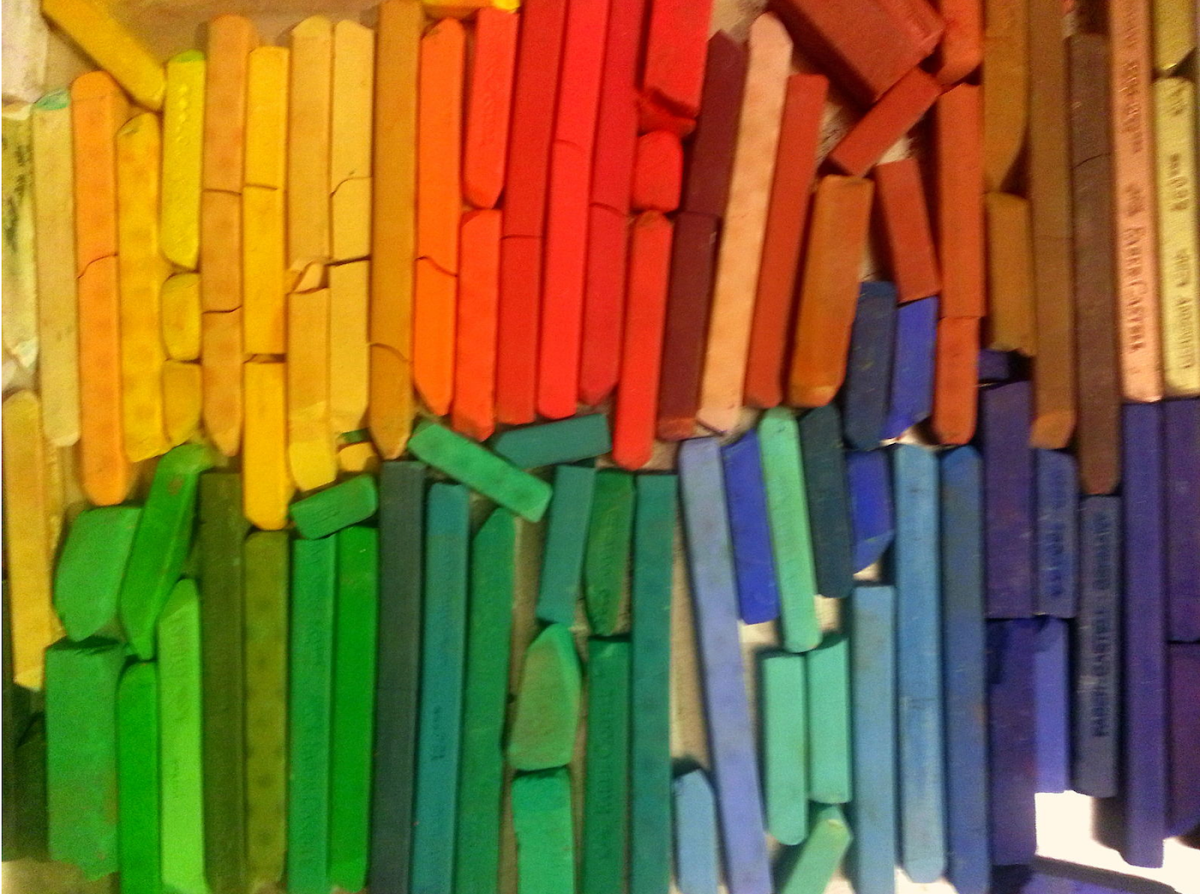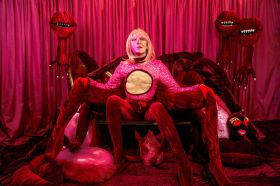Over the years there have been many conversations about the toxicity of some art materials, leading to a number of products being banned, or at least regulated.
Lead poisoning (found in certain paints) was not unusual in the past, as were respiratory issues prior to the encouraged use of ventilators, and what is often called ‘tradie’s cancer’ – cancer of the bladder thanks to exposure to toxic solvents and glues.
More recently, there has been a growing interest in environmentally friendly studio practices, which has expanded from education – aka not tipping the turps down the drain – to a conscious choice of using less environmentally erosive materials.
Taking it a step further, some artist have a desire to move to animal-free art materials. Just as meatless burgers and plant-based substitutes have become commonplace, activists against animal cruelty have broadened the consumer market on all things, including art materials.
However, it is a more difficult transition. There’s not a lot of reliable information out there, and more so, there is a lot of confusion around whether existing products are animal-free or not.
While there is a lot of information available about animal testing where clothing and cosmetics are concerned, the art supplies market doesn’t have the weight to warrant such reporting.
‘Artists don’t usually think of their work as a final resting place for animal parts,’ writes Dylan Kerr (Artnet, 2017). ‘But from sepia (forcibly obtained from squid) and India ink (more crushed bugs) and to oil pastels (fat + beeswax) and charcoal (specifically Bone Black, which lives up to its name), critters’ bodies abound in all manner of art supplies.’
How do you know if it’s vegan?
To clarify, veganism is the practice of abstaining from the use of animal products in diet or manufactured goods, and an associated philosophy that rejects the commodity status of animals and related animal suffering.
‘The only way to find out if your art supplies are vegan is to contact a brand or manufacturer and ask them. You’ll find that you’ll often receive unclear and complicated answers, or even no answer at all,’ writes Jopie for the blog Shop Like You Give a Damn.
Sometimes brands are not even aware of the animal ingredients in their products.
Jopie, Shop Like You Give a Damn
Jopie, like Kerr, welcomed the rise in vegan art material supplies.
‘It’s up to all of us who believe that animals shouldn’t suffer so we can express ourselves, to use our consumer power to support vegan products, and to effect change,’ Jopie said.
While a few art brands have lists of vegan products available on their website, or on request, largely it’s up to the individual to do the legwork.
In an earlier interview, Australian artist Caroline Rothwell told ArtsHub that, for a number of years, she has made conscious choices in purchasing her art materials. ‘I made a decision not to buy a lot of materials from art stores. I use unbleached canvas and water based product … There is a sealer I buy and it costs more than the cheaper not-environmentally friendly version, but I just commit to that. The cost is driven by the market, but also by more awareness,’ Rothwell said.
Whether vegan or environmentally conscious, demand for certain art materials will bring prices down with time.
Read: Why is the cost of art-making surging?
Rothwell added that one of the reasons she started to make more environmentally-freindly inflatable, temporary public projects was because she could, ‘just plug in, inflate and deflate and pack away – it has a small footprint and I like its impermanence’.
She believes in thinking through solutions to how and what we make without compromising one’s artistic practice or your ethical position.
Common animal-derived ingredients: what to look for
Traditionally, art supplies have used ingredients from the hair of sables, pigs, and squirrels to make brushes; the boiled skins, bones, tendons, and hooves of pigs and cows to make gelatin-based gessoes; and ground shell and animal by-products to create pigments for paint.
Then there is rabbit skin glue and bone glue, both made from animal by-products from the factory farming industry. A common alternative is the plant-based binder Gum Arabic.
Gelatin is another common binder, often used in the production process of making paper (especially watercolour paper) which also includes animal by-products.
Asking if an art paper is vegan-friendly, the natural thought would be yes. An animal is not directly used in paper’s production, but trace elements, such as gelatin, would be extremely minimal. So it comes down to the individual and degrees of one’s embrace of veganism. The question to ask is, ‘Does this paper include Gelatin?’
Beeswax and animal fat are often used in crayons, oil pastels and pencils. Alternatives are available using vegetable derived fats and waxes.
Animal hair is the standard for artist-quality paint brushes. They can come from boar, goat or horse hair (a by-product of factory farming), with finer brushes typically using sable or mink hair (fur farming). Check for the words sable or kolinsky, indicating animal hair has been used. Synthetic brushes use polyester bristles and are widely available today.
Read: 15 new art spaces you suggested we visit
Glycerine – another base ingredient of some art materials – is extracted from either animal or vegetable fats, such as soybean, coconut or palm oils, so you have choices there also. But again, you need to do the legwork to find the right brand for you.
With regard to pigments, a lot has changed in this area. Traditionally, Indian yellow was originally made from cow urine, sepia from squid ink, and Tyrian purple was derived from snails.
Generally, all paints and inks that are called ivory black or bone black are made from the ashes of burnt animal bones – a waste product of factory farming. The most commonly used alternative is a pigment called lamp black or carbon black, historically made from lamp soot and which has bluish, sometimes slightly brownish undertones. Another alternative is Mars Black, which is made from iron oxide.
Carmine, or cochineal, is a bright red dye obtained from finely ground cochineal scale insects. The most common alternatives are cadmium, azo (less toxic) and the synthetically produced alizarin pigments.
Another to look out for is oxgall, a binding agent in watercolor paint derived from cows, and still widely used by many brands.
Shellac can give a wonderful finish, but it is a resinous secretion of the lacquer insect. Although it is an animal-derived ingredient (and therefore non-vegan), the insects are not killed, though a huge number are required to produce this material, which is harvested by scraping the secretion off the trees they inhabit
Shellac is commonly used in primers, varnishes, coatings and fixatives for drawings and paintings, and is used as a binder in India ink.
Which brands are vegan friendly?
When Jopie chose to embrace veganism five years, they did a lot of research, starting by contacting the known brands and building a resource to share through the veganism blog Shop Like You Give a Damn.
‘A lot of companies I’ve contacted aren’t sure whether their products are vegan. But as more and more customers have called or e-mailed with questions, these companies have started to look into their supply chains to check, was something tested on animals, was something refined with animal ingredients, etc.’ Jopie writes.
That resource was updated in 2020, and while it’s hard to guarantee any product is 100% vegan friendly with changing formulas and supply channels, Jopie believes it is a great place to start.
When it comes to brands, Jopie noted that, ‘traditional doesn’t necessarily mean better. As you’ll see in this list, vegan art supplies are available in both student and professional grades’.
Vegan friendly suppliers
- Derwent Inktense pencils do not contain beeswax and pure carbon sticks of graphite are vegan friendly. They are one of the few brands that have a list of vegan products on their website.
- Leading the sector, the German paper brand Hahnemühle has been vegan since the 1960’s – this is stated openly on their website.
- Strathmore Bristol paper is made without the use of gelatin.
- Rather than using natural sponges for blending the graphite into the paper, synthetic cosmetic sponges work.
- Raphaël Kaërell synthetic sable are respected for their brushes.
- PVA Size by Gamblin is a vegan friendly alternative to the ubiquitous rabbit skin glue used to prime and size canvases for painting.
- DaVinci and Holbein both produce vegan friendly watercolors and professional artist-quality paints, and DaVinci has a range of synthetic brushes. Interestingly, they don’t market them as animal-free meaning the primary focus is their quality in the marketplace.
- German art-supply company Faber-Castell markets all their products as cruelty-free and environmentally friendly – the one exception is their beeswax crayons.
- Faber-Castell India and sepia inks are made with inorganic and synthetic materials rather than shellac, and their black pigments are produced from oil, coal, and wood in place of animal bones.
- Copic are known for their range of colored markers, favoured by illustrators. They told Jopie: ‘Copic products don’t contain any animal products and we and our suppliers don’t test on animals’.
- Culture Hustle is one of the few paint and pigment brands that is really active in sustainability and veganism and actively try to counteract the status quo. Culture Hustle started as a response of British artist Stuart Semple to elitism in the artist world, in particular the patenting of the black pigment Vantablack by artist Anish Kapoor.
- Daniel Smith is well known for their use of natural pigments and are transparent about their origin, however some of their black may have trace elements. Best to check.
- Italian papermakers Fabriano reported to Jopie: ‘All our products are gelatin-free except hand made paper (Esportazione, Secolo XIII, Roma), which still use the original recipe. We do not use any other animal derived ingredients.’
- Dutch brand Kaia Natural Watercolour is non-toxic, 100% vegan, plastic-free, handmade and natural.
- Natural Earth Paint is a US brand, difficult to find, but has good vegan credentials.
- Pentel – the iconic Japanese marker maker – are largely synthetic and animal free, but check with the company on specific items.
- Royal Talens have a long list of vegan art materials and are a strong advocate in this area.
- Winsor & Newton have a mix of animal based and vegan art materials and are happy to supply a list.
Data complied by Shop Like Your Give a Damn.
Other great resources for vegan art materials:
- Double Check Vegan
- Jackson’s Art
- The Australian Facebook group Vegan Art Supplies Australia





